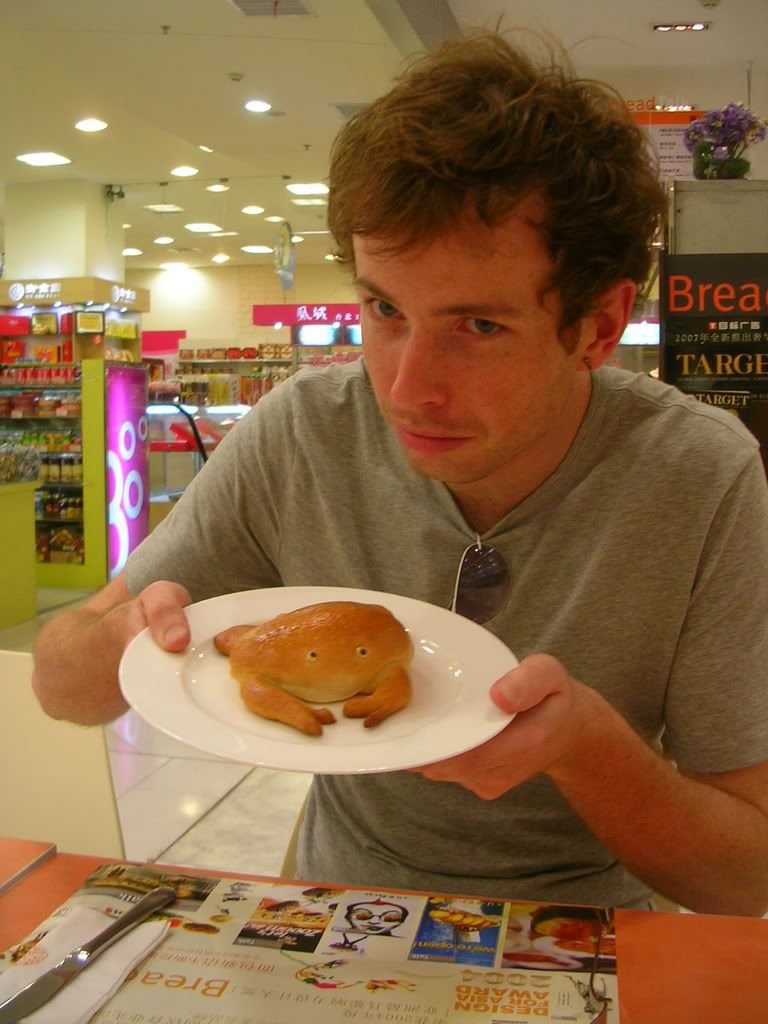 Over the last few days, I've been pushing into Chayuan, the sprawling mega-market at the far end of Maliandao - sometimes with my colleague, Blake [pictured]. Blake likes crabs made out of bread and stuffed with custard.
Over the last few days, I've been pushing into Chayuan, the sprawling mega-market at the far end of Maliandao - sometimes with my colleague, Blake [pictured]. Blake likes crabs made out of bread and stuffed with custard.Though my bargaining has been improving with experience, I am happy to recount the following tale, which left both Blake and I doubled up in laughter in front of an equally amused shopkeeper. My level in Chinese is totally awesome.
[Blake finds a tea-tray he likes and wants me to barter for it.]
Me: how much is this small tray?
Vendor: That's 64.
Me: That's a bit high. How about 150?
Vendor: Hmm.
(I thought he meant 640. Win win win.)
 Pushing on, I realised that I hadn't taken the obligatory photo of... Luyu, is it? From previous pictures, I thought that this was a monumental piece of statuework, perhaps in a position of great prominence. In fact, it's hidden behind a bin off to one side and is approximately 1.5m tall - I had to crouch to make it look dramatic.
Pushing on, I realised that I hadn't taken the obligatory photo of... Luyu, is it? From previous pictures, I thought that this was a monumental piece of statuework, perhaps in a position of great prominence. In fact, it's hidden behind a bin off to one side and is approximately 1.5m tall - I had to crouch to make it look dramatic.ML, the pleasant chap who sold me the tuocha that I mentioned before, started off one of our trips, introducing Blake to some of his back-catalogue. I grabbed some more tuocha, as did Blake, before getting a recommendation from him as to his favourite pu'er shop. He came up with Yu Ling Yi, a place at the back of Chayuan that allegedly sells proper gushu [ancient tree] pu'er.
It turns out that the place is "101 Lincang Factory", with organic blurb all over the shop, and large maps and promo-boards that make it look hyper-modern and progressive. We were served by a young lady named Xiuxiu, whom ML had introduced to us by telephone from his shop. Asking for her favourite, we were served up a 2005 Jingmaishan [pictured].
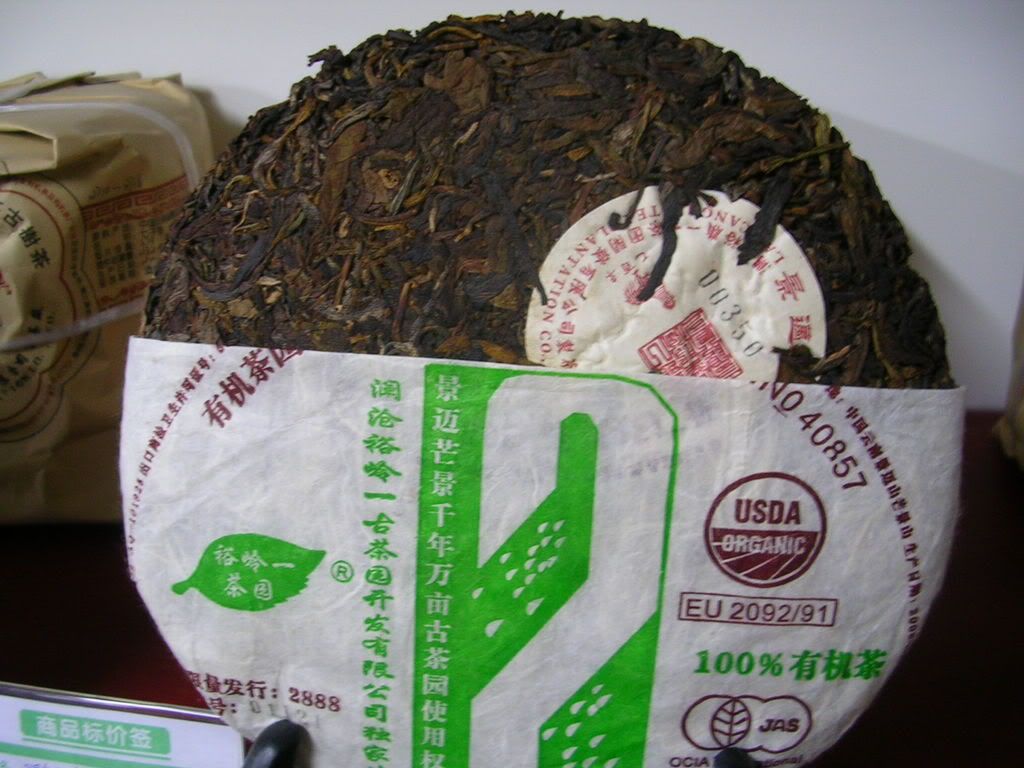 The price is super-high at 600 RMB [$80]. There's not much more expensive in Maliandao that I've come across for a young tea. It tasted mighty fine, and was clearly worth the accolade - but I'm not sure if it's worth the money. Or rather, I'm not comfortable with spending that amount of money when there are cheaper teas of slightly lower quality available - one of those tricky situations. As MarshalN pointed out, the photo is a bit dark and doesn't really show the true brightness - I think that's a bit beyond me, given the Chinese Windows XP thing here.
The price is super-high at 600 RMB [$80]. There's not much more expensive in Maliandao that I've come across for a young tea. It tasted mighty fine, and was clearly worth the accolade - but I'm not sure if it's worth the money. Or rather, I'm not comfortable with spending that amount of money when there are cheaper teas of slightly lower quality available - one of those tricky situations. As MarshalN pointed out, the photo is a bit dark and doesn't really show the true brightness - I think that's a bit beyond me, given the Chinese Windows XP thing here.Other interesting finds include some decent maocha at a fair price from SL (whose boyfriend was cooking up some dinner while I drank tea!):
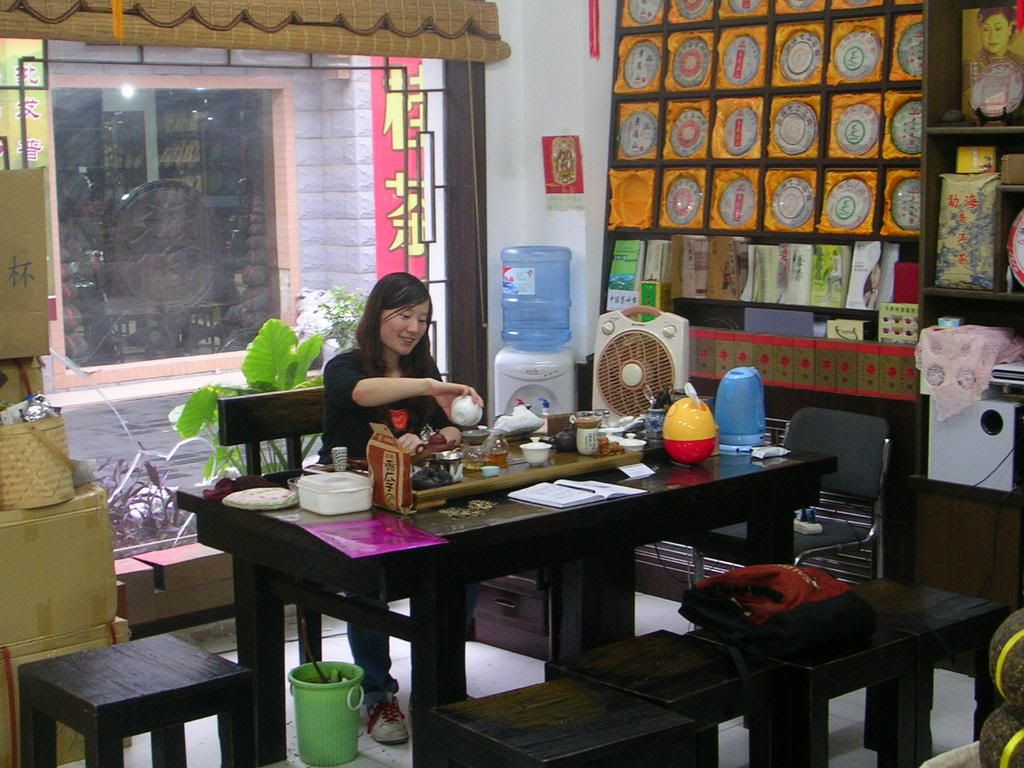 She could speak less English than I could Chinese (!), but we still managed a surprisingly interesting conversation about Chan Buddhism [Chinese Zen] somehow. Plus, she buys the same brand of sunflower seeds as we do at home!
She could speak less English than I could Chinese (!), but we still managed a surprisingly interesting conversation about Chan Buddhism [Chinese Zen] somehow. Plus, she buys the same brand of sunflower seeds as we do at home!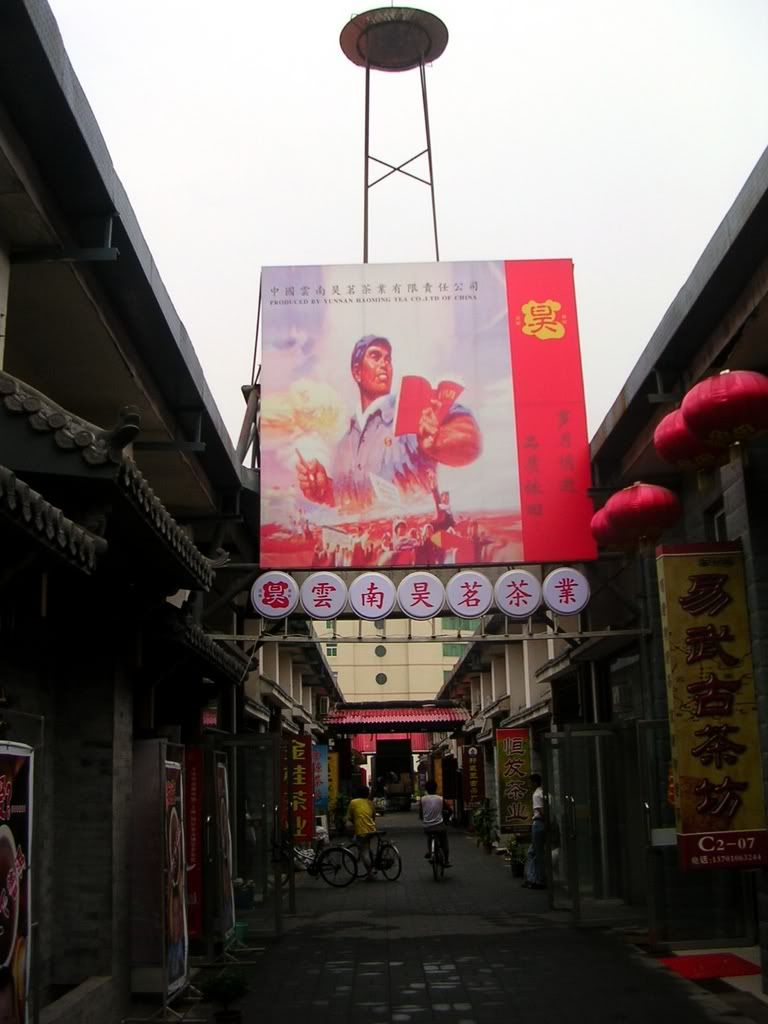
Finally, we found some decent 2007 Jingu "Yangtashan" bing in the Yundun shop (Chayuan B2-9). I grabbed a single bing for now.
The nearby shop had a fabulous propaganda poster for its tea advert [pictured] - I really love these posters, either German, Russian, or Chinese (or British, American for that matter). It reminds me of the car-sharing poster, "When you ride alone, you ride with Hitler." Marvellous.
The sun was getting low, and my hangover from the previous night's club was still biting, so we called it a day. I think my first (fairly negative) impression of Maliandao has been overturned. It just requires a little persistence, and the fruits are there to be unearthed.
I really dislike bargaining, though!
From Chayuan, good night:
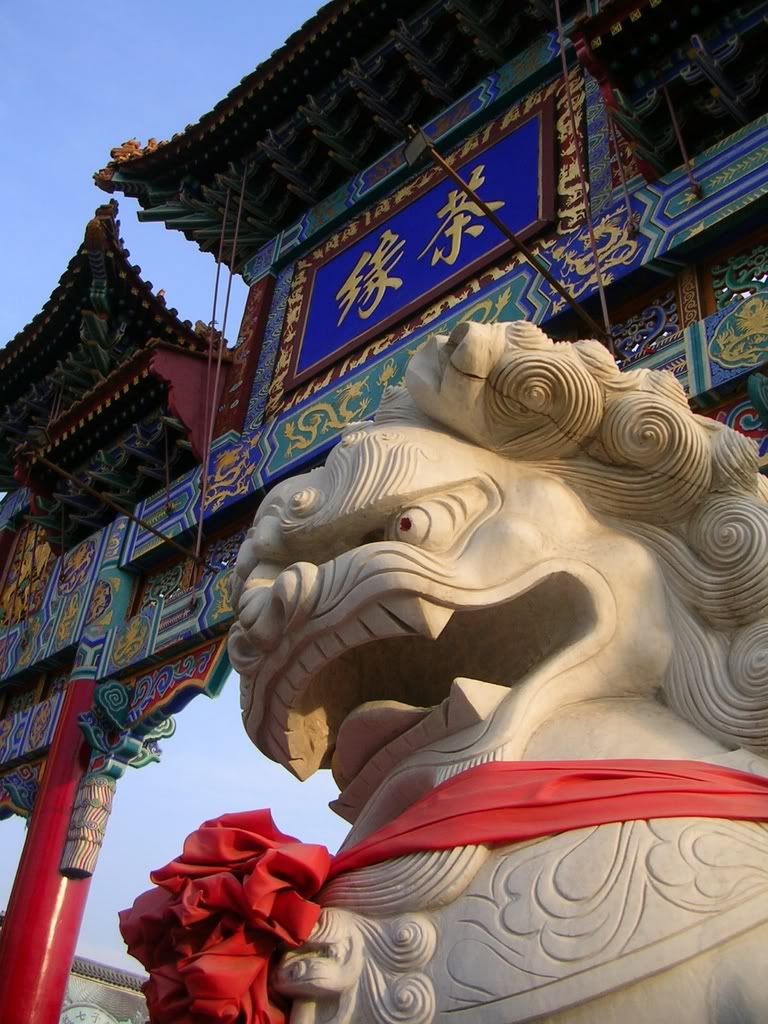

It’s easy to misunderstand any time the numbers; 10 and 4 are involved, phonetically quite similar. All in all, a relatively inexpensive lesson. john
ReplyDeleteCrab? That looks like a frog to me.
ReplyDeleteWhenever I bargain in Chinese, I have to confirm 4 and 10 by showing fingers (by making a cross sign with 2 index fingers to confirm 10 -- don't do the vampire joking gesture with the vendor, however). I got scolded harshly by a street-side shoe seller once for giving him 4RMB when the asking price was 10RMB -- cheap baby shoes.
ReplyDeleteYes, Maliandao gets better as you spend more time in it. Kinda like puerh, isn't it?
ReplyDeleteChayuan does not always have the best stuff, actually. I'd suggest walking around the other malls some more. Many older shops (thus, older tea) are kept in those places and not in Chayuan -- which is almost all new, factory-specific shops.
Love the pictures. That bingcha looks like a cookie wrapped in a napkin. I want to take a big bite out of it.
ReplyDeleteAs for the fine citizen portrayed in the poster, he's fairly buff for being so scholarly.